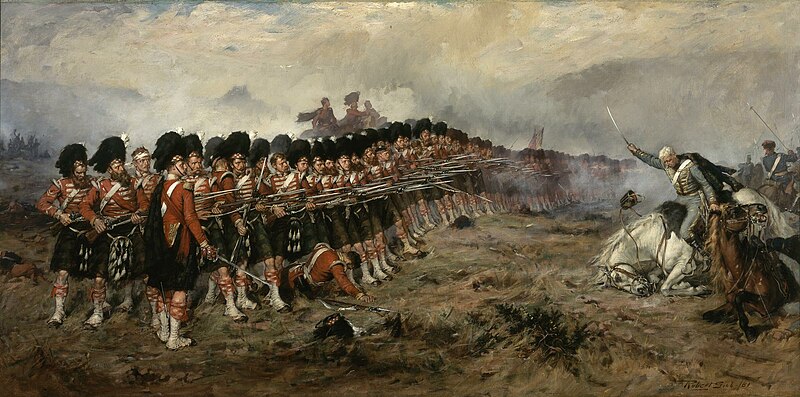
Prof Bo Molander once pointed out to me and the other students in the class that when you try to change people, you go up against billions of years of evolution, “good luck with that” and when you try to change groups, you go up against millions of years of evolutions, “good luck with that too”. The only thing you can hope to change is the organization.
Greger Wikstrand and I have been carrying on a discussion about architecture, innovation, and organizations as systems. Here’s the background so far:
- “We Deliver Decisions (Who Needs Architects?)” – I discussed how the practice of software architecture involved decision-making. It combines analysis with the need for situational awareness to deal with the emergent factors and avoiding cognitive biases.
- “Serendipity with Woody Zuill” – Greger pointed me to a short video of him and Woody Zuill discussing serendipity in software development.
- “Fixing IT – Too Big to Succeed?” – Woody’s comments in the video re: the stifling effects of bureaucracy in IT inspired me to discuss the need for embedded IT to address those effects and to promote better customer-centricity than what’s normal for project-oriented IT shops.
- “Serendipity and successful innovation” – Greger’s post pointed out that structure is insufficient to promote innovation, organizations must be prepared to recognize and respond to opportunities and that innovation must be able to scale.
- “Inflection Points and the Ingredients of Innovation” – I expanded on Greger’s post, using WWI as an example of a time where innovation yielded uneven results because effective innovation requires technology, understanding of how to employ it, and an organizational structure that allows it to be used well.
- “Social innovation and tech go hand-in-hand” – Greger continued with the same theme, the social and technological aspects of innovation.
- “Organizations and Innovation – Swim or Die!” – I discussed the ongoing need of organizations to adapt to their changing contexts or risk “death”.
- “Innovation – Resistance is Futile” – Continuing on in the same vein, Greger points out that resistance to change is futile (though probably inevitable). This post contained the wonderful quote above.
What an intriguing statement: you can’t change the behavior of individual people; you can’t change the behavior of groups; you have to change the behavior of the organization. What?
The rest of the paragraph sheds some light:
It is the same with my sheep, I do not try to change them as individuals or as a flock but by managing their access to shelter, food and water and by managing onboarding and offboarding of individual sheep in the flock I do manage the whole organization according to my goals.
Rather than changing the nature of sheep, individually or as a group, Greger uses his knowledge of their nature to structure things so that compliance is the natural outcome. Changing their nature, assuming it’s even possible, would take millions of years. Working with the grain of their nature is considerably easier. Military organizations have recognized this since ancient times, using individual and group characteristics to promote unit cohesion.
In the post “Locking Down the Prisoners: Control, Conflict and Compliance for Organizations”, I noted something similar. You get a lot more compliance when you make it easier to comply. Conversely, making it difficult for someone to do their job well is an excellent way to kill both motivation and effectiveness. I’ve used the quote from Tom Graves before, but it bears repeating: “…things work better when they work together, on purpose”.
Matt Ballantine, in his post “Best Practice versus Good Ideas”, showed how an organization promoted innovation. Rather than imposing “best practices”, which depending on context might not actually be “best”, the company promoted learning and sharing. Because these behaviors were rewarded, people engaged in them and innovation was fostered. Both the organization and the people that made it up benefited.
Congruence between what is said and what is done is critical. I’ve seen it said that changing culture is hard. Changing culture is impossible if you claim to value one thing but your actions demonstrate that you really don’t.
In a conversation with Greger on SPaMCAST 370, he pointed out that individuals and cultures have huge amounts (thousands, if not millions of years) of evolutionary baggage that make change difficult. Organizations have less baggage albeit often enough to make change hard (at least change that has pain involved). I agree that hard becomes nearly impossible if there is a miss-match between what is said and actions unless the players are changed.
LikeLiked by 1 person
I’d say that it’s impossible no matter what when that mismatch exists. No matter who says what re: values, people are going to look at what’s actually done and base their decisions on that (either complying with the actual culture vs. the professed one or bailing on the organization because it violates their morality). I strongly suspect when all is out in the open this will be the reason behind the recent VW emissions scandal. Even if the decision to cheat was really made by a rogue programmer or two, a lot of other people were willfully blind for a reason (or VW’s quality program is non-existent!)
LikeLike
You’re right, it was top of my mind since I had written part 8 of the blog series.
LikeLike
Possibly one of the outstanding historical examples of such interactions between individuals/groups/organisations is the GM/Toyata NUMMI venture, as discussed in http://www.thisamericanlife.org/radio-archives/episode/403/nummi. It is an absolutely compelling listen how the changes to an organisation’s operations had an enormous impact on how individuals worked.
LikeLiked by 1 person
Pingback: SPaMCAST 377 – Empathy, Getting Things Done, Culture Change | Software Process and Measurement
Pingback: Form Follows Function on SPaMCast 377 | Form Follows Function
Pingback: Innovation on Tap | Form Follows Function
Pingback: Accidental Innovation? | Form Follows Function
Pingback: “Want Fries with That?” | Form Follows Function